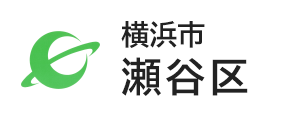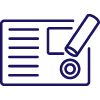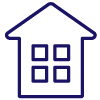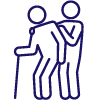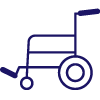- Yokohama-shi Top Page
- Seya Ward Top Page
- Disaster Prevention and anti-crime program
- Disaster Prevention and Disasters
- Frequently Disaster Prevention QA Collection and Flood Damage
Here's the text.
Frequently Disaster Prevention QA Collection and Flood Damage
Last Updated October 30, 2024
About evacuation sites
Q: Where should I evacuate when a typhoon approaches or heavy rain?
A1: If your home is in danger, such as flooding, consider evacuation to relatives and friends' homes where there is little danger of flooding, in order to avoid the three crowds in evacuation sites, in addition to the evacuation sites established by the government.
A2: If there is no danger at home, consider evacuation at home (evacuation at home).
A3: Consider evacuation actions such as evacuation to the upper floor (vertical evacuation) or evacuation to a room far from cliffs (horizontal evacuation) at home.
Q: Where will the evacuation sites be established?
A: Unlike the evacuation sites in the event of an earthquake, evacuation sites is opened in consideration of typhoon course and rainfall.
When evacuating, check the Seya Ward Office website before evacuating.
Q: What should I do when I evacuate?
A1: The items to be brought to evacuation sites are listed in "Seyano Disaster Prevention and Flood Damage", so please refer to them.
A2: In principle, we do not distribute food and drink in evacuation sites, but we may distribute it to those who are difficult to prevent heat stroke or bring it to elderly people.
※We don't have hot water.
Blankets and mats will be distributed to applicants, but the number is limited, so please bring it with you if you can bring it.
A3: From the viewpoint of infectious disease control, bring a "mask" when evacuating and bring a "hand disinfection alcohol".
About evacuation behavior
Q: I don't know when to evacuate
A1: If a typhoon is approaching or heavy rain, be careful of information from the government.
A2: If evacuation information is issued by the government, those in the evacuation area should start evacuation immediately.
In addition, even if evacuation information has not been issued from the government, start evacuation if you feel dangerous.
Q: My home is not an evacuation area, but I want to evacuate because I am uneasy.
A: People outside the evacuation area can also use the evacuation sites designated by the government.
However, from the viewpoint of infectious disease control, if you can ensure your home safety, consider evacuation at home.
Q: Warning level 3 (evacuation preparations, evacuation of elderly people, etc.) has been issued, but I do not know if to evacuate.
A: If it takes time to evacuate elderly people, start evacuation. Others are in the stage of preparing for evacuation, but start evacuation as soon as you feel danger.
Q: I don't know if my home is an inundation area.
A: Please refer to the “Seya Ward Flood Hazard Map” and “Seya Disaster Prevention and Flood Damage” for confirmation. The Seya Disaster Prevention and Flood Damage Edition was distributed to all households in Seya Ward from June to August 2020.
You can also check the "Yokohama City Wai Wai Disaster Prevention Map" on the WEB.
Q: My home is not an inundation area, should I evacuate?
A: The inundation area is only assumed. If there is unexpected rainfall, unexpected inundation may occur. If you feel that your home is dangerous, evacuate.
Q: What should I be aware of when evacuating?
A1: Avoid evacuation with boots or sandals, and evacuate with athletic shoes (sneakers).
A2: If the road is submerged, consider evacuation at home. However, if your home is judged to be dangerous, evacuate to evacuation sites.
A3: When walking in places where evacuation roads are flooded, it is difficult to notice that there are steps and obstacles. When walking, move while checking with something like an umbrella or cane.
A4: When evacuating or when evacuation information is issued, talk to your neighbors and share the information.
Measures against infectious diseases in evacuation sites
Q: How do you take measures against infectious diseases in evacuation sites?
A1: As a countermeasure against infectious diseases in evacuation sites, we will ask you if you have cold symptoms at reception. As a result, evacuees with symptoms will be evacuated to another room other than the gymnasium.
A2: Please wear a mask in the gymnasium.
A3: Please cooperate with alcohol disinfection of fingers if necessary.
A4: In the gymnasium, evacuees (one household) will have to evacuate at intervals.
About hazard map
Q: What is a hazard map?
A: Hazard maps are maps of danger spots and evacuation sites in the event of a disaster.
Q: What kind of hazard maps do you have?
A: Floods, inland waters, high tides, tsunami, landslide disasters, volcanoes, etc.
In Seya Ward, there are flood hazard maps, inland water hazard maps, and landslide hazard maps. In addition, "Flood Hazard Map" and "Inland Water Hazard Map" are created together as "Inundation Hazard Map".
Q: Where can I get a hazard map?
A: Hazard maps are distributed free of charge at Seya Ward Office General Affairs Division.
About evacuation of pets
For more information about pet measures in the event of a disaster (flood and flood damage), please visit the Medical Care Bureau Animal Protection Center website.
Inquiries to this page
Seya Ward General Affairs Department General Affairs Division
Telephone: 045-367-5611
Telephone: 045-367-5611
Fax: 045-366-9657
Email address: se-somu@city.yokohama.lg.jp
Page ID: 781-444-026
